Natural Remedies to Treat and Prevent Flu
The throat becomes sore, nose runs continuously, and sneezes occur abruptly; rest assured that you have flu. You would reach out for Tamiflu, but this would suppress the symptoms momentarily making the flu germs dormant. What is required is a conclusive remedy which can be found in natural extracts and products.
The acute viral infection, flu, affects the upper respiratory tract along with lungs. WHO reports that during autumn and winter, flu takes on an epidemic proportion in northern hemisphere affecting about 5-15% of the population(1).
Annually, flu epidemics cause about 3 to 5 million cases of severe illness and about 290 000 to 650 000 respiratory deaths(2).
Influenza A and B strain of viruses invade our immune system and attack the respiratory system to cause flu. Although flu can occur at any time of the year, it is more common in late fall, winter and early spring. The flu virus is active for 5-10 days in normal human beings.
Symptoms usually last longer in pregnant women, geriatric patients, young children and people with chronic diseases such as cancer, heart disease, diabetes, asthma, COPD, and HIV.
Table of Contents
Natural Remedies for Flu
- Essential Oils
- Natural Foods
- Home Remedies
Natural remedies are highly effective in improving the immune system of the body and warding off the viruses that contagiously try to invade your organic system. Natural remedies are more effective than medications because the flu viruses regularly change and mutate which lessens the mitigatory effects of medicines.
Also, antibiotics are meant for fighting bacteria and not viruses(3). Flu’s sonic spread rate is apparent from the fact that 9.2 to 35.6 million US people every year contract influenza.
CURE 1: Essential Oils for Flu
Essential oils are highly effective in alleviating the symptoms of flu if applied correctly, research suggests. Different oils have antiviral elements inherent in them in different potencies. A proper application would lead to therapeutic relief from flu symptoms quickly as the oils attack and deactivate the hemagglutinin protein of the virus.
1. Lemon Oil
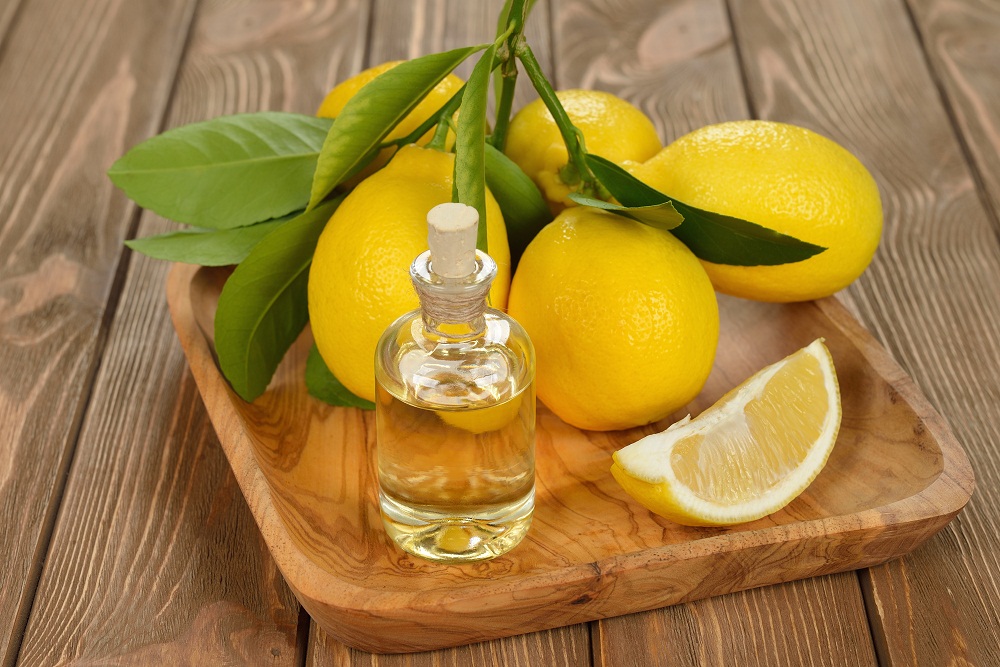
Lemon oil can cleanse body toxins and is widely used for stimulating lymphatic drainage, rejuvenating energy, and fighting virus.
Why Does This Work?
Lemon essential oil is composed of many natural compounds, including terpenes, sesquiterpenes, aldehydes, alcohols, esters, and sterols. It is good for clearing blockages in nasal passages which facilitates steady, unobstructed breathing.
How to Use?
The lemon peel which is rich in phytonutrients can be cold pressed to extract the oil which can be applied over the nasal region with hand. The oil can also be inhaled directly. The refreshing and invigorating aroma would cleanse nasal passage and offer symptomatic relief. You can also rub a few drops of diluted lemon oil onto your chest for reducing congestion.
How Much to Use?
One small bowl of lemon oil can be taken once at a time, 3-4 times during the day, for inhaling and applying.
2. Lavender Oil
Lavender oil is useful in relieving stress, reducing the quicker onset of fatigue, fighting off depression and headaches.
Why Does This Work?
It works because of its proven anti-inflammatory properties that can ease the pain of headaches and also relaxes sore muscles.
How to Use?
You have to add the oil to a carrier oil for massaging over the sore areas of your nose, throat, and head. You can also rub the oil over the temples. With a diffuser, the oil can be made to pervade all through the room and you can also spray it over the pillow for a relaxing night’s sleep that boosts the immune system.
How Much to Use?
One bowl full of lavender oil is sufficient. You can also contact a healthcare practitioner to learn more.
3. Peppermint Oil
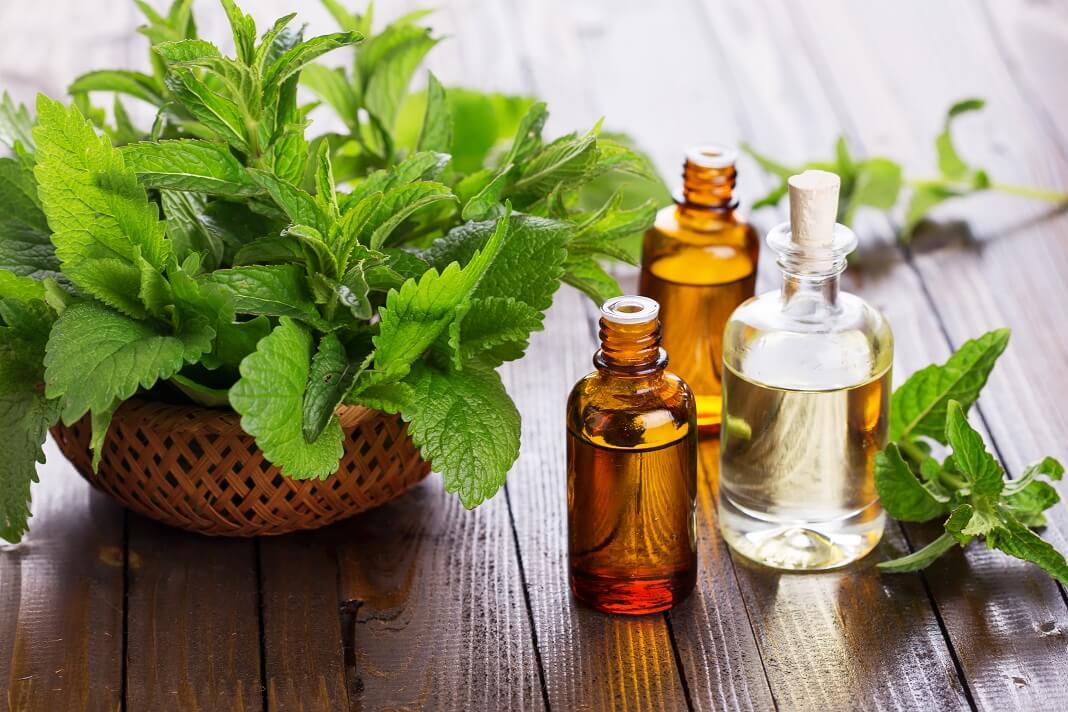
Peppermint oil is a natural decongestant which is useful in reducing cough, sinusitis and preventing throat related scratchiness that shows up during flu.
Why Does This Work?
Peppermint oil is rich in antiviral elements while helps in eliminating flu viruses when diffused through your room. The oil is also an expectorant that is effective in clearing the nasal passage and ridding the body of excessive mucus. When inhaled, it can offer instant relief from headache.
How to Use?
You need to add a few drops of this oil to a carrier oil for gently massaging on to your feet’s bottoms and neck’s back. The oil can also be added in a diffuser.
How Much to Use?
The oil is to be used in moderate amounts i.e. one bowl full for inhaling the aroma or filling the diffuser.
4. Oregano Oil for Flu
This essential oil is rich in carvacrol which is an antiviral component that fights off flu causing pathogens.
Why Does this Work?
Research has shown that carvacrol is effective in inactivating murine norovirus (MNV) within an hour of exposure. This speaks volumes about its effectiveness in exterminating flu viruses.
How to Use?
You need to take one drop of this oil internally. For this, you should only purchase therapeutic grade oil. The oil can also be diffused throughout the room. You can also massage the oil on the chest and neck after diluting with a carrier oil.
How Much to Use?
One bowl full if you want to use it in a diffuser but you would need only a few drops if you want to internalize it.
5. Cardamom Essential Oil
This oil is warm and spicy sweet. Its effectiveness in fighting off flu virus is proven. The soothing effect of cardamom helps in offering relief from constant, dry cough.
Why Does this Work?
Cardamom oil is very good in relieving congestion and boosting a strong immune system. The therapeutic effect of cardamom has been appreciated for centuries.
How to Use?
You have to put in a few drops in a hot water bowl. Put a towel above your head and continue breathing in the steam for about 10 minutes to secure relief from nasal and chest congestion. The oil can also be massaged over the chest region for promoting deeper, obstruction free breathing.
How Much to Use?
Only a few drops of cardamom oil would be required for each therapeutic session.
6. Eucalyptus Oil

Eucalyptus oil is efficient in reducing the impact of fever and fighting the flu virus. The oil de-stresses you which induces a better and relaxing sleep.
Why Does This Work?
The strong and rich aroma of eucalyptus oil is good for opening up nasal blockages and inducing relief. The oil when inhaled is capable of opening up the airways and easing symptoms of cough. The cleansing and purifying properties of eucalyptus is effectual in killing flu germs. Also, the cooling effect of eucalyptus induces healing in case of fever.
How to Use?
You need to add about ten drops of this oil in a hot water bowl. After placing the towel over the head, start breathing in the steam for about ten minutes. The oil can also be put in a diffuser which after spreading through the room kills airborne pathogens. You can also add about ten drops of the oil in two cups of water. Washcloths can be dipped in it and then applied across the forehead.
How Much to Use?
About 5 to 10 drops for each application is sufficient.
7. Frankincense Essential Oil

This oil has been used since olden times due to its anti-inflammatory, diuretic, and disinfecting(4) properties.
Why Does This Work?
Frankincense essential oil exhibits strong immune-stimulant properties. The oil reduces inflammation and also improves immunity.
How to Use?
You need to use a diffuser and top it up with the oil for making it pervade all through the room. You can also add some drops of the oil in warm bathwater. Also, the oil can be added to a carrier oil for gentle massaging over the feet soles, chest and neck.
How Much to Use?
You would require a few drops of the oil for each type of usage discussed above.
8. Lemongrass Essential Oil
This oil has been an integral component of Ayurveda due to its proven effectiveness in reducing fever and treating flu.
Why Does this Work?
Lemongrass oil(5) is rich in anti-inflammatory, antibacterial, antifungal, and stress-relieving elements. The oil also promotes sweating due to which toxins are released from the body which leads to a reduction in temperature during fever.
How to Use?
You have to put in a few drops of the oil in a steam inhalator for breathing in. Few drops of the oil can be added in warm bathwater. Oil drops can also be massaged on the feet soles.
How Much to Use?
Few drops of oil would be sufficient for each session.
9. Clove Bud Essential Oil
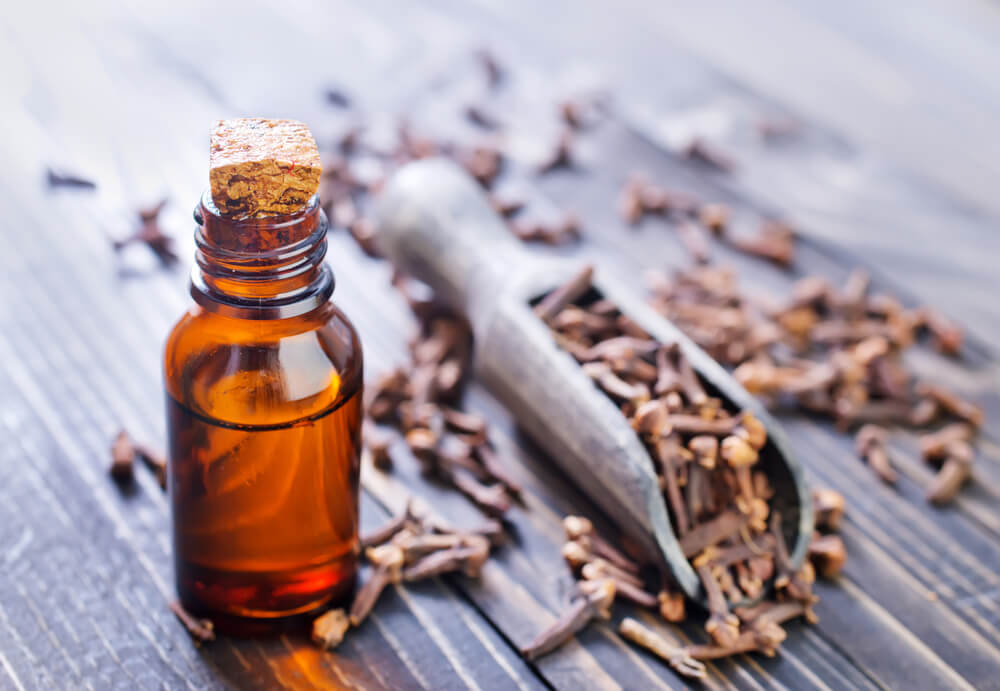
Clove bud oil is also effective in fighting the symptoms of flu infection(6). It boosts the health of respiratory systems and ensures the proper functioning of the immune system.
Why Does this Work?
Clove bud oil has proven antiviral properties which render the strains of influenza virus ineffective.
How to Use?
You can add the oil to a diffuser; massage a few drops on the soles of feet, or add to warm bathwater.
How Much to Use?
Only a few drops of the therapeutic grade for each session.
10. Thyme Essential Oil
This essential oil is rich in antiviral and decongestant properties. The application of oil offers relief during cold or when the respiratory tract suffers inflammation.
Why Does this Work?
The oil is helpful in boosting energy when fatigue sets in during the flu. Thyme oil is also helpful because it is rich in antiviral properties that can fight off respiratory infections.
How to Use?
You need to mix the oil with a suitable carrier oil and rub it over the chest for decongesting the same. Also, the oil can be put in a steam inhaler and the vapors can be breathed in. By filling a diffuser with the oil, it can be spread throughout the room. The oil can also be added in warm bathwater.
How Much to Use?
Only a few drops of the oil would be sufficient.
11. Clary Sage Essential Oil
This essential oil is a versatile one(7). It is highly effective in offering symptomatic relief during the flu.
Why Does this Work?
The essential oil is rich in astringent, digestive, antispasmodic, antiseptic, and nervine properties. The anti-spasmodic properties of the oil offer relief from spasmodic cough and other respiratory issues upon inhalation. The oil also opens up the sinuses and induces relaxation in bronchial tubes.
How to Use?
The oil can be used in a diffuser for spreading it across the room and offering relief from respiratory issues. It can also be mixed up with massage oil for rubbing on neck and chest.
How Much to Use?
You need to use only a few drops of the oil for each application.
12. Rosemary Essential Oil
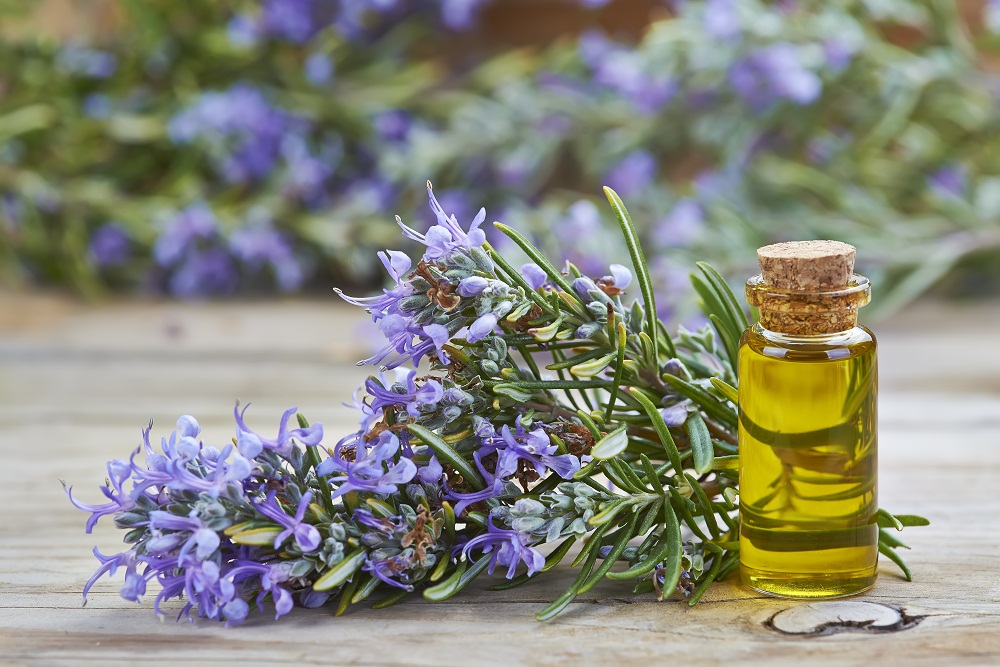
Rosemary oil relieves pain, boosts the immune system, and heals respiratory problems. This offers significant relief during flu.
Why Does this Work?
Rosemary oil is capable of calming the mind which de-stresses you during flu, relieving pain, fighting viral infections and relieving congestion.
How to Use?
You have to add a few drops of the oil in a steal inhalation and then breathe in the same. The oil can also be massaged or added to a warm water bath.
How Much to Use?
You can use 5-10 drops of Rosemary oil in one application. When the oils are meant for topical application, they have to be diluted prior to applying to the skin. Usually, for every few drops of essential oils, you need to utilize one ounce of carrier oil. A healthcare expert can guide you better on the proper usage of essential oils.
CURE 2: Natural Foods for Flu
Plant foods are rich sources of minerals and vitamins that strengthen the body’s immune system and render it less vulnerable to viruses by preventing any modification in the gene compositions of blood cells.
1. Nuts, Berries, and Seeds
Nuts, berries, and plant seeds are highly effective in fighting influenza virus.
Why Does This Work?
These plant foods are abundant in a large array of plant compounds called phytochemicals like flavonoids, polyphenols, lignans, and organosulfides. These have antiviral properties and promote health.
How to Use?
You can either eat them raw or can add them as part of your cooked food. The seeds of pumpkin, sunflower and sesame can be crushed and the pulverized paste can be consumed directly or added to your food while cooking. Walnuts, almonds, Brazil nuts, and pistachios can be eaten raw along with citrus fruits, strawberries, blueberries, and avocados. Carrots, sweet potatoes, winter squash, tomatoes, garlic, mushrooms, and red peppers can be taken as a salad.
How Much to Use?
The quantity of each of the aforementioned foods can be determined based on the severity of your flu in consultation with a dietician or healthcare practitioner.
Also Read: Health Benefits of Eating Nuts
2. Honey for Flu
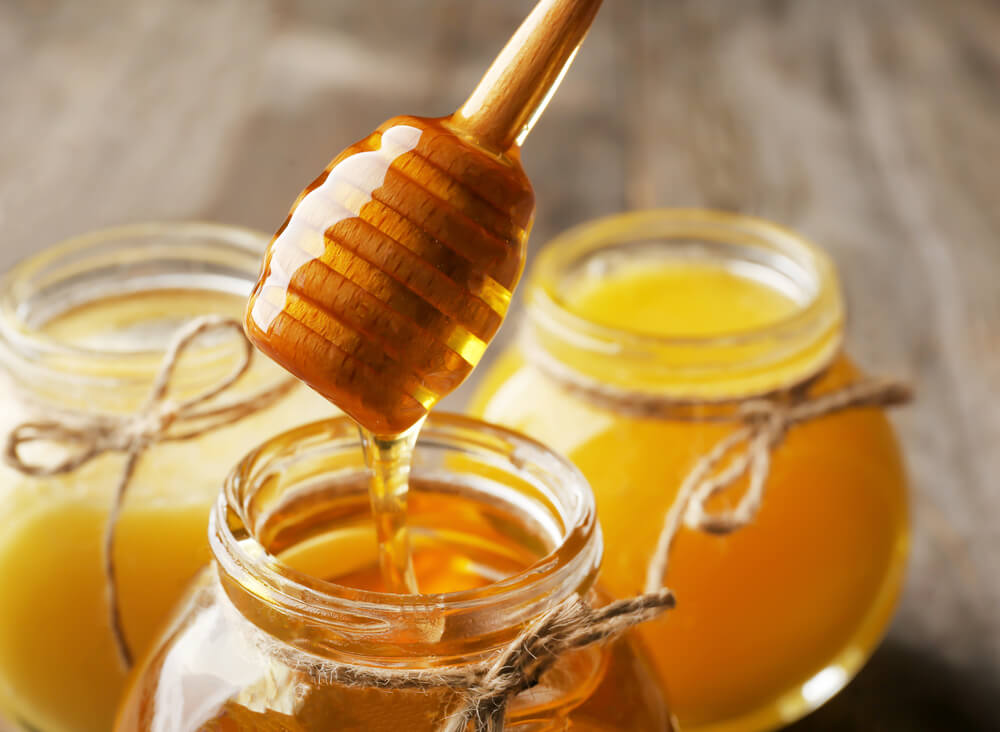
Honey is very useful in the soothing sore throat due to its cough suppressant elements. When flu-induced cough troubles you, taking honey can offer significant relief.
Why Does This Work?
Honey has the capability of soothing the irritated mucous membranes which offer relief from the irritation that is triggered by the cough reflex. Honey is natural and contains no artificial ingredients which also enhances its effectiveness. Honey does not have artificial ingredients or dyes added to it, hence its potency is not mitigated in any manner.
How to Use?
You can either directly take 2-3 tablespoons of honey orally or mix the same in lukewarm water and drink the mixture. You can also go for cough syrup that contains honey. Usually, such syrups have dark honey, zinc, and Vitamin C as their constituents.
How Much to Use?
If you are using honey as part of syrup, the same should be taken thrice a day or as advised by your doctor. Honey can also be taken directly if needed; 2 teaspoonfuls in lukewarm water twice or thrice a day is recommended.
3. Ginger For Flu
Ginger is also a good natural remedy for curing flu. It is known for its anti-inflammatory and anti-bacterial properties.
Why Does This Work?
Ginger has been used for curing flu since time immemorial. It works because it is replete with natural ingredients that ward off the inflammation causing agents in your throat. Ginger also is effective in congestion, nausea, colds, and fevers.
How To Use?
In many oriental countries, ginger is an essential additive for preparing food items. You can buy ginger from a local grocery shop or even can order it online. Ginger paste is to be prepared and the same can be consumed in the form of juice, adding it to your cooked food item or you can prepare Ginger tea for flu treatment.
How Much to Use?
Few knobs of ginger have to be converted in the form of a paste and the same needs to be mixed in fruit or other juice whose flavor you may prefer. You can also consult a dietician or can browse online to learn how best to put it in use to fight the adverse effects of flu.
4. Elderberry For Flu

The berries growing on the elder tree also prove effective during flu. The cold which accompanies the flu can be cured by taking elderberry syrup.
Why Does This Work?
Elderberry is rich in anti-inflammatory and antioxidant ingredients. These are useful in battling the viral strains that cause cold. Researches have indicated that consuming elderberry syrup can be effective in shortening the bout of cold. It is even useful for curing sinus infections.
How To Use?
The elderberry syrup is usually available at chemist’s shop or you can also order the same online. It can be taken orally as a syrup.
How Much To Use?
The quantity of syrup to be used can be as per the recommendation printed on the cover or as suggested by your doctor.
Also Read: Evidence Based Health Benefits of Elderberry
5. Propolis For Flu
Propolis is also produced by bees apart from honey. This is a natural product that bees use for sealing off their hive from unwanted intruders. Propolis can also be used during flu for obtaining relief.
Why Does This Work?
Propolis is known for its antiviral and anti-bacterial properties which are effective in curing sore, scratchy throats and common cold which usually accompany flu.
How To Use?
Propolis is sometimes available as a processed product in chemist’s shops. You can consume it raw or can use its processed form.
How Much To Use?
You can take 1-2 tablespoons of propolis paste or syrup twice or thrice a day. You can also connect with a dietician to learn how best to use this natural product.
6. Garlic For Flu

Garlic has earned the renown of being a powerful antioxidant which also comes packed with many other health-promoting properties. Garlic is useful in alleviating the symptoms of flu.
Why Does This Work?
Garlic is effective in reducing flu because it is a strong antioxidant that comes with antiviral, antibiotic and antimicrobial properties. Garlic is rich in minerals, enzymes, vitamin C, sulphur, and selenium. All these natural elements are useful in busting the flu’s symptoms.
How to Use?
Garlic can be used as part of your cooked meals. You can also eat whole garlic clove if you can withstand the pungent taste of the material.
How Much To Use?
Even if you put in more garlic in your cooked food, it would never impact you with side effects. If you are deciding to eat it raw, you can eat as much as you can withstand.
CURE 3: Home Remedies For Flu Treatment
1. Iodized Salt
Iodized salt can prove helpful in offering you relief from scratchy, sore throat. This is based on the simple principle of osmosis which you have read in school.
Why Does This Work?
Osmosis is the basic principle at work. When salt water is gargled, the salt pulls out viral fluids from inside the throat.
How to Use?
You need to take a glass of lukewarm water, approximately 8 ounces in quantity. Dissolve in it half or one-fourth teaspoonful of salt. After mixing properly, take a mouthful and gargle thoroughly. Spew out the gargled water in the sink.
How Much To Use?
This effective process offers instant relief although momentarily. You can decide the quantity based on your discretion. Usually, a glass full of warm water is sufficient. For each glass of water, half or a quarter teaspoonful of salt is enough.
2. Probiotics
Probiotics are “friendly” bacteria that help maintain a healthy balance of microorganisms in your intestines, or your “gut.” About 70 percent of your immune system is located in your gut, so it’s easy to understand that gut health affects immune function. Some studies have shown that taking probiotics reduces the risk of viral infections including colds and flu.
Why Does This Work?
That said, probiotic supplements are widely used and side effects are rare. There are many different strains of probiotic bacteria. Studies that have linked probiotics with protective effects against viruses have used the strains L. plantarum, L. paracasei, L. rhamnosus, B. lactis, and B. subtilis.
How To Use?
If you decide to take a probiotic, ask your doctor or pharmacist what bacterial strains are thought to be most effective.
If you want to take a probiotic to support gut health and general wellness, find a product that contains multiple strains and contains a minimum of 10 billion colony-forming units (CFUs); you can find this information on the label. You can also add foods to your diet that contain probiotics.
Probiotic bacteria, which are produced naturally during the process of fermentation, are found in some types of yogurt (check the label), kefir (a drink made from milk), sauerkraut, kimchi (a Korean dish that includes cabbage and other vegetables), and tempeh (fermented soybeans).
How Much To Use?
You can use probiotic as per the recommendation of your doctor or as per the advice that is printed on the label.
3. Bone Broth

Bone broth is another name for chicken soup. The one that is homemade is best for fighting off the effects of cold and flu.
Why Does This Work?
Bone broth is effective because it is rich in anti-inflammatory amino acids as well as immune boosting vitamins and minerals which can be digested by the body easily.
How to Use?
The bone broth has been traditionally prepared in all households since centuries. The recipe is natural. You need to get it prepared and take with pieces of bread or boiled rice. You can also drink it directly.
How Much To Use?
One soup bowl of bone broth is sufficient every day to steer clear of flu.
4. Epsom Salt Bath For Flu
Epsom salt has to be used in conjunction with essential oils for securing soothing relief from flu.
Why Does This Work?
Epsom salt is capable of introducing relaxation and facilitates detoxification of your cells if it is used along with essential oils while taking a hot bath. The salt also triggers osmosis during bathing. The toxins in the body are suctioned out and released in the bath water. This induces unparalleled relaxation which appears to be very comforting during the flu.
How to Use?
The Epsom Salt is to be mixed in bathwater after pouring in a few drops of essential oils.
How Much to Use?
Few drops of Epsom salt put in the bathwater would do the trick.
How To Prevent Flu From Spreading?
How does the flu spread? Well, flu is contagious and is spread through contact. Flu can be prevented by observing a few sanitation related rules.
| Ways to Prevent The Spread of Flu | Precautions to Be Observed |
| 1. Washing Hands Thoroughly | Single most effective action you can take to prevent colds and flu is to wash your hands. Handwashing is important, you must how to wash your hands properly to reduce your vulnerabilities.
Wet your hands with clean, running water (warm or cold), turn off the tap, and apply soap. Lather your hands by rubbing them together with the soap. Be sure to lather the backs of your hands, between your fingers, and under your nails. Scrub your hands for at least 20 seconds. Rinse your hands well under clean, running water. Dry your hands using a clean towel or allow them to air dry. If there is no soap or water, use an alcohol-based hand sanitizer that contains at least 60 percent alcohol. However, keep in mind that hand sanitizers kill some, but not all, types of germs. When using a hand sanitizer, place the amount of product as directed by the label in the palm of one hand and then rub your hands together, thus covering all areas of your hands for at least 15 seconds, or until they’re dry. Then, when you do have access to soap and water, make hand-washing your first priority. |
| 2. Cleaning Hands Properly at Regular Intervals | Hands need to be washed at periodic intervals after you have engaged in some activities as delineated below:
|
| 3. Keeping Items in Common Use Cleaned | Some items or things that are used by many users need to be cleaned at regular intervals.
Some such items are:
|
Healthy Habits To Follow To Prevent Flu
For preventing yourself from being ensnared by flu germs, you need to eat foods that are rich in vitamins and minerals. They play a pivotal role in boosting immunity. Such nutrition includes vitamins A, C, D, E, B6, and B12, folate, zinc, iron, selenium, and copper.
| Flu Preventing Foods | Foods to Eat |
|
Rich in vitamins and other flu virus preventing nutrition |
|
| Plant Foods | Plant foods contain a wide array of phytochemicals (plant compounds), such as flavonoids, polyphenols, lignans, and organosulfides that have antiviral and other health-promoting properties. |
| Regular Exercising | Getting the recommended amount of weekly exercise i.e. 150 minutes of moderate-intensity exercise or 75 minutes of vigorous-intensity exercise is associated with many health benefits, including lower blood pressure, blood glucose levels, and cholesterol levels,lower risk of heart disease, diabetes, depression, and many other chronic conditions, a healthier weight, and less stress.
All of these effects will benefit you if you do get a cold or flu. |
| Proper Sleep | The amount and quality of sleep you get can affect your immune system. Research has shown that people who don’t get quality sleep or enough sleep are more likely to get sick after being exposed to a cold virus, and their symptoms last longer than people who got enough quality sleep.
Some research suggests that not getting enough sleep can reduce the effectiveness of vaccines. You may think of the time you’re asleep as a period of inactivity, but, in reality, some of your systems are very active. While you’re asleep, your immune system produces cytokines, antibodies, and other substances that are involved in fighting viruses and decreasing inflammation. Getting less sleep means reduced production of these important disease-fighters. |
| Flu Vaccines | How effective is the flu vaccine? According to statistics, it can be up to 70 percent effective. In other words, as many as seven out of 10 people who receive a flu shot may not get the flu.
The vaccine’s effectiveness, however, varies from year to year. For example, the 2017-18 vaccine’s effectiveness was estimated at 36 percent, meaning that just over one-third of people who were vaccinated received a protective effect from the vaccine. The flu vaccine protects against three or four strains of flu viruses. Each year, the vaccine is formulated based on World Health Organization scientists’ predictions of which viruses are likely to be most active during the upcoming flu season. These predictions are based on data from more than 100 countries. It’s possible that by the time the next flu season begins in the U.S., the strains will have changed or mutated. There are two main types of viral strains that cause the flu: influenza A and influenza B. However, there are many subtypes of both strains. During the 2017-18 season, the most prevalent type A strains were A(H3N2) and A(H1N1) pdm09. An estimated 69 percent of influenza infections were caused by A(H3N2) viruses. The vaccine effectiveness has been estimated at just 25 percent against the A(H3N2) virus, 67 percent against the A(H1N1)pdm09 virus, and 42 percent against B viruses. |
| Avoiding Overuse of Antibiotic | Antibiotics will not kill viruses; they are effective against infections caused by bacteria. If you develop a secondary bacterial infection, such as sinusitis or bronchitis, due to a cold or flu, your doctor may recommend antibiotics for those conditions. Again, though, antibiotics will not help if you have a virus.
Also, taking antibiotics raises your risk of developing resistant bacteria, meaning that you could end up with a “superbug” that isn’t killed by regular-strength antibiotics and may require very strong medications and/or repeated courses of medications to get under control. |
| Staying Hydrated | When you have a fever, you need plenty of fluids to help your body fight the infection and to replace fluids lost from sweating (and from vomiting or diarrhoea, if you have them).
If you’re not eating much, you also need to make up for the fluids you’d normally be getting from foods (many foods are more than 50 percent water). Water, clear broth, and herbal teas are good choices. Fruit juices are another option, but drink them in moderation (a total of 8 to 12 ounces per day) and make sure they contain no added sugar. Avoid alcohol and caffeine; they can have dehydrating effects. Add lemon and/or honey to hot beverages if you prefer. |
| Resorting to Natural Remedies | Rest properly:
When your body is fighting an infection, it needs to use all of its resources for healing. If possible, take a break from working, cleaning the house, and other normal daily duties, and just rest. Create a comfortable environment: Keep your room warm but not overheated. If the air is dry, it may irritate your sinuses, nasal passages, and throat; use a humidifier or vaporizer to moisten the air. Soothe your throat: Gargling with salt water can temporarily relieve a sore or scratchy throat. Make salt water by dissolving a quarter teaspoon of salt in a 4-ounce glass of warm water. Use saline nasal solutions: To help relieve nasal congestion, try saline nasal drops or a saline nasal rinse, such as a Neti pot. You’ll find these products in most pharmacies. Eat nutritious foods: When you have a cold or the flu, you may not have much of an appetite. When you are up to eating, it’s tempting to reach for comfort foods, but you’ll get more disease-fighting nutrients from a smoothie made with fruits and/or vegetables, a green salad, or some homemade vegetable or chicken soup. Foods that are heavy, high in fat, and/or fried will require more of your body’s resources to break down and digest. |
| Using Natural Supplements | Studies on zinc have produced mixed results. In studies that linked zinc with a reduction in cold symptoms, zinc lozenges appeared to be most effective when taken within 24 hours of symptom onset. Avoid using nasal sprays that contain zinc; they have been associated with a loss of smell that may be permanent. Long-term use of zinc is not recommended.
According to the NCCIH (National Center for Complementary and Integrative Health), there is insufficient evidence that these products or supplements help prevent colds or relieve symptoms: Andrographis, Chinese herbal medicines, garlic, green tea, vitamin D, and vitamin E. The bottom line on supplements: If you have had good results with echinacea, zinc, or other supplements, there’s usually no harm in taking small doses for short periods of time. However, if you take any other medications, including over-the-counter products, get your doctor’s approval before taking a supplement to avoid potentially serious consequences. |
FAQs
1. How Long Are You Contagious With Flu?
A cold virus is contagious the day before you start having symptoms, and you are contagious as
long as your symptoms last. Some experts believe that you may still be contagious for a week or so after your symptoms have cleared up. Cold symptoms usually last for a week to 10 days; symptoms may last longer if you smoke or have a weakened immune system.
If you have the flu, you may be contagious for five to 10 days, including the day before your symptoms begin.
2. How Long Does Flu Last?
Flu symptoms usually persist for three to five days in people who are otherwise healthy. Symptoms may last longer in young children, pregnant women, adults over age 65, and people with chronic diseases such as cancer, heart disease, diabetes, asthma, COPD, and HIV.
3. How Does the Flu Spread?
In humans, the flu may be caused by two strains of viruses, influenza A and influenza B. Each of these viruses have subtypes, so there may be several types of viruses circulating at any given time. Flu spreads through contagion method i.e. when a normal person comes in contact with an affected person or uses his/her items.
4. In which months flu spread the most?
Although most of us think of colds and flu primarily as winter illnesses, they’re actually most common in the late fall, winter, and early spring, although both can occur at any time of the year.
Flu can easily take its sway on you if you fail to observe natural hygiene precautions or mix freely with those who have contracted flu. However, the profusion of easily available natural remedies for flu ensures that you can get rid of the symptoms quickly without prolonging your sufferings.
Flu can be prevented easily with a healthy lifestyle. Remaining wary of things that have been discussed above would help you steer clear of any prospect of contracting influenza. You can engage in further research online to understand the functioning of natural remedies in a more comprehensive manner. Such insights would help you to incorporate the natural remedial ingredients into your food routine.




